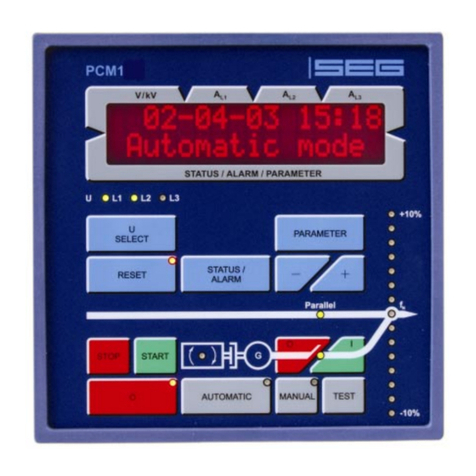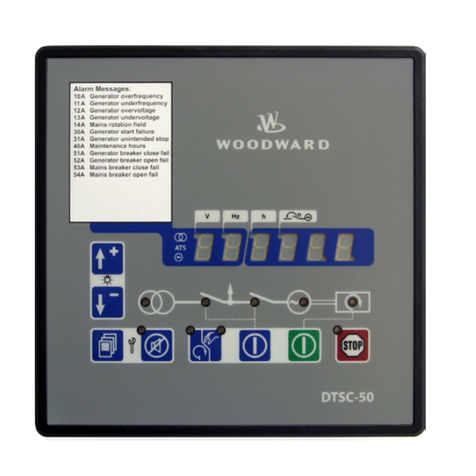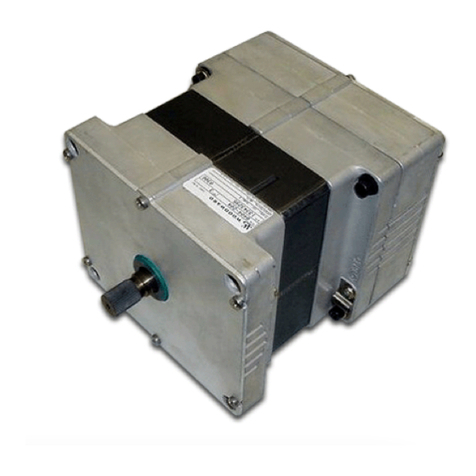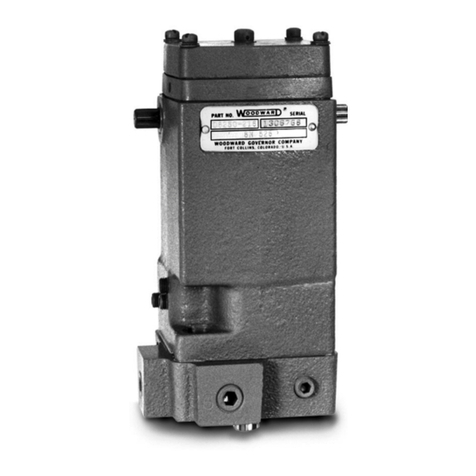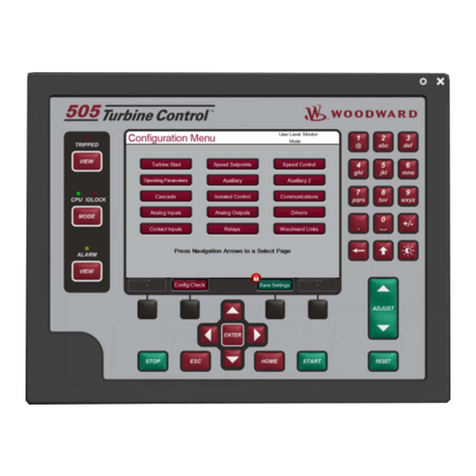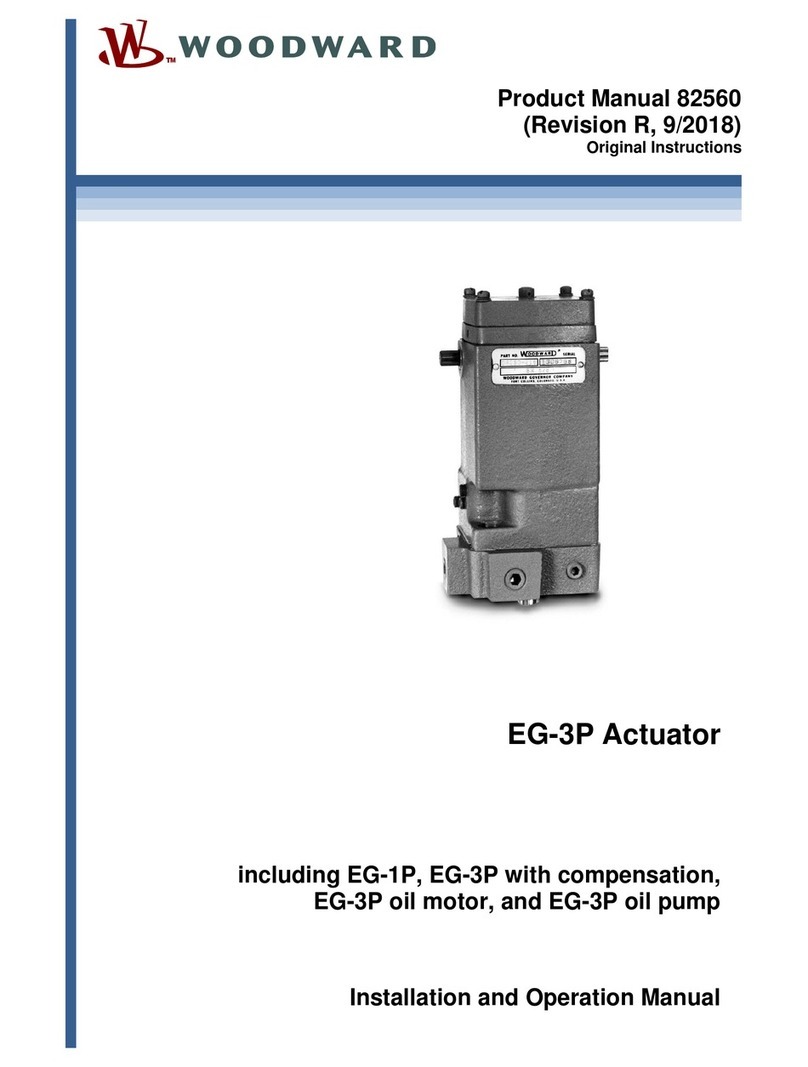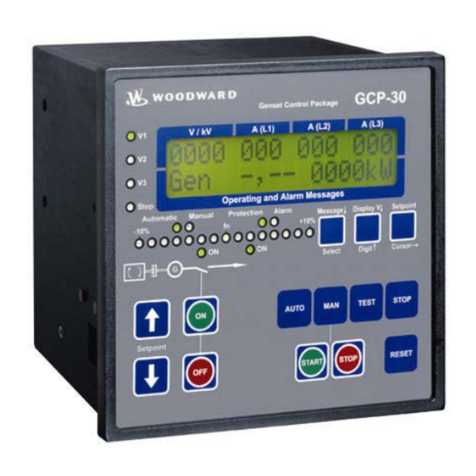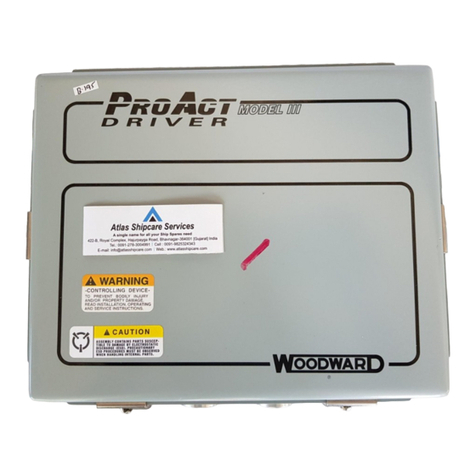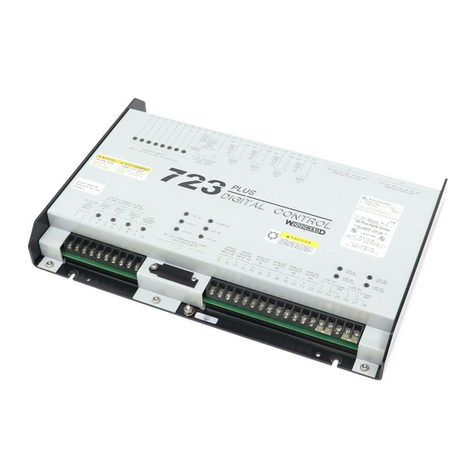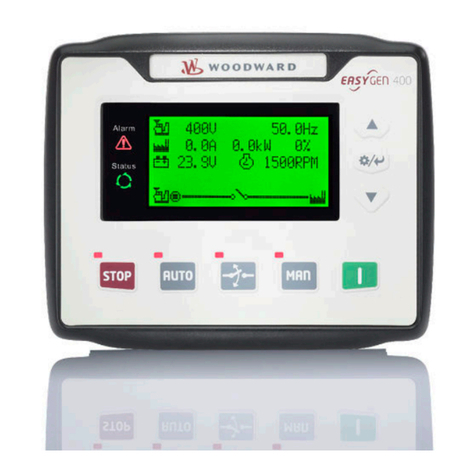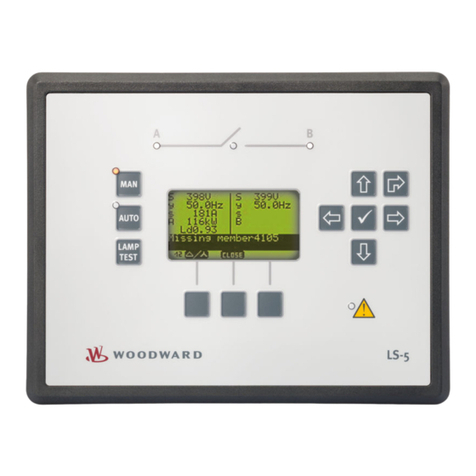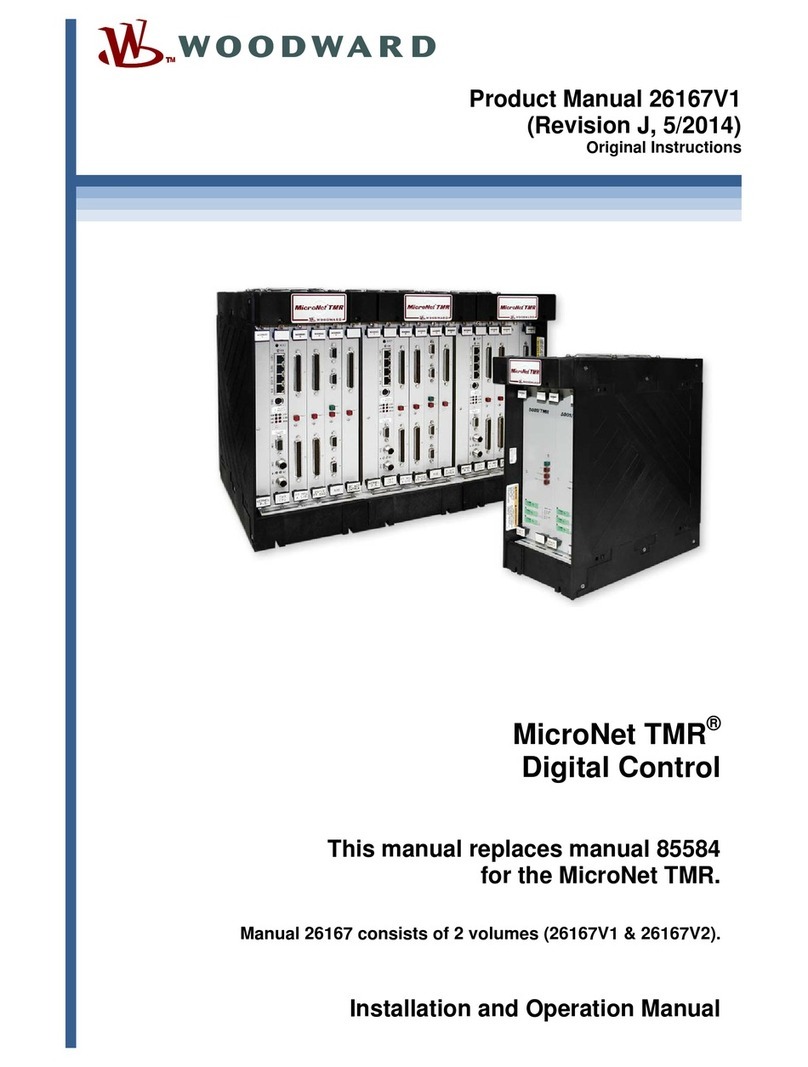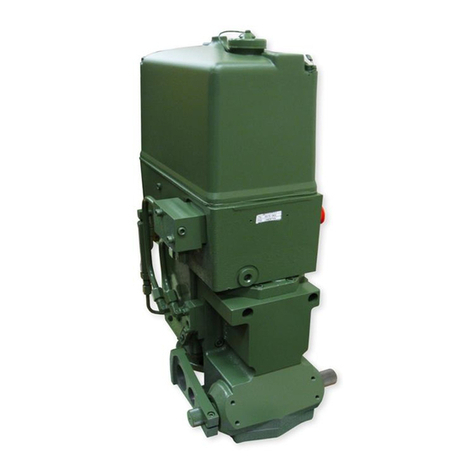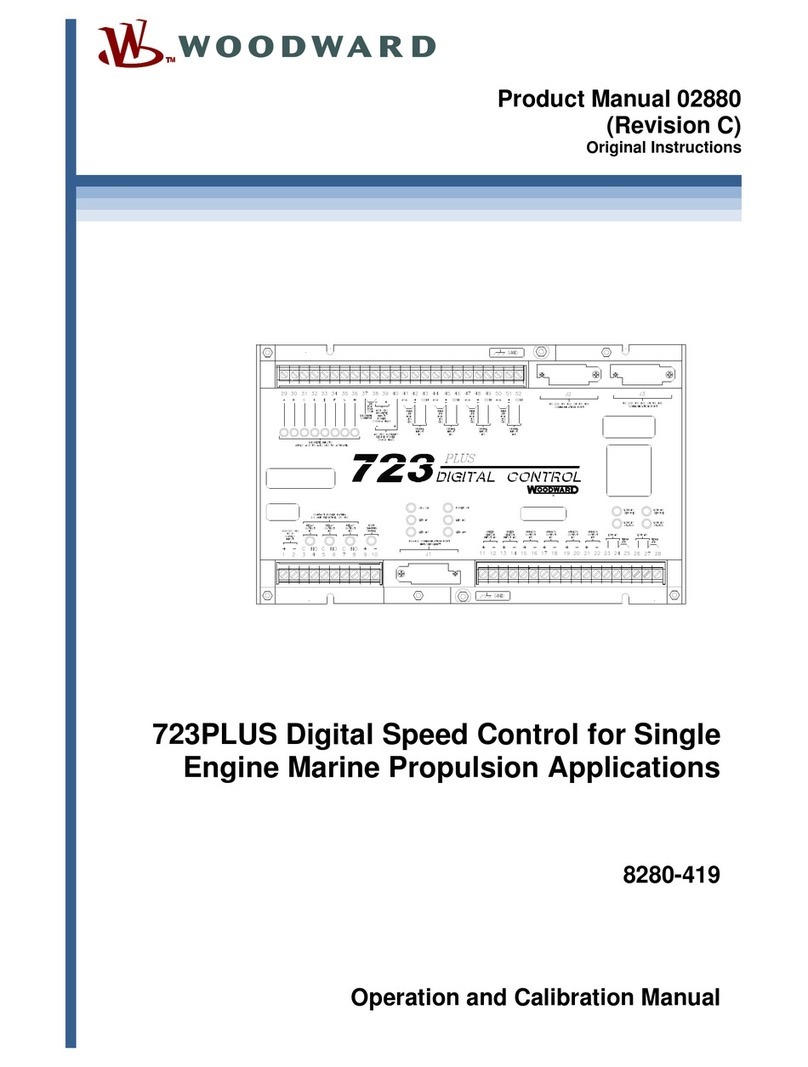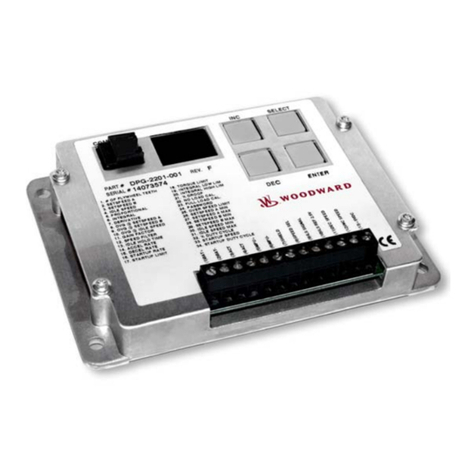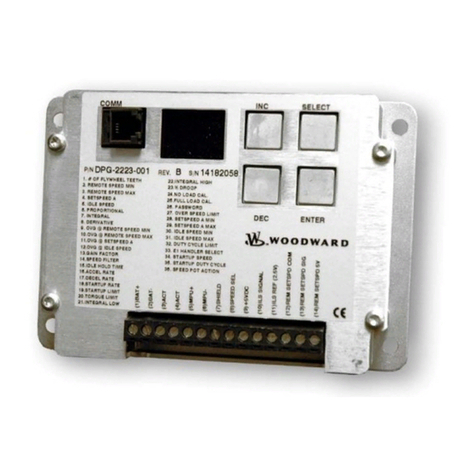
SG Governor Manual 04048
8 Woodward
Chapter 2.
Principles of Operation
A schematic arrangement of a typical SG governor is shown in Figure 2-1.
As described earlier, the governor uses engine oil as a control medium and does
not have an independent sump. The engine oil enters the governor at the relief
valve, drops down into the cavity on the suction side of the governor oil pump,
and is carried by the pump gears around to the pressure side of the pump. If the
supply of pressure oil is greater than is required for governing purposes, the
governor pump will build up pressure until the relief valve plunger is pushed to
the right against the force of the relief valve plunger spring. The governor pump
will then recirculate the oil within the governor.
If pressure oil is used for governing purposes, the pressure will be reduced and
the spring will move the relief valve plunger to the left. The recirculating passage
is thus blocked so that operating pressure is maintained.
The pilot valve plunger controls the movement of the power piston by directing oil
to and from the area beneath the power piston. The power piston, operating
through the power piston pin and terminal lever, positions the terminal shaft to
which the engine fuel linkage connects.
When the governor is running on-speed, the control land of the pilot valve
plunger covers the control port of the ballhead bushing, and the power piston
remains stationary.
If the engine load is increased, the governor speed decreases, and speeder
spring force—now greater than the lifting effect of the centrifugal force developed
by the rotating ballarms—pushes the pilot valve plunger down. Pressure oil is
directed to the area under the power piston and pushes the piston up. The power
piston and pin rotate the terminal lever and terminal shaft in the direction to
increase fuel.
Note that, as the terminal lever rotates in the “increase fuel” direction, the speed
droop pin is raised. The right end of the floating lever pivots about the speed
adjusting lever pin as the left end of the lever is raised. Raising the left end of the
floating lever raises the spring fork and decreases the speeder spring force.
Thus, the governor ballhead is enabled to re-center the pilot valve plunger at
lower speeds as fuel is increased, a characteristic described as “speed droop”.
Closing the control port stops further movement of the power piston
simultaneously with return of the engine to the lower speed, a speed determined
by the new speeder spring force.
If the engine load is decreased, the governor speed increases and the ballarms
lift the pilot valve plunger against the downward force of the speeder spring. The
uncovered control port in the ballhead bushing connects the oil under the power
piston to sump. The absence of pressure under the power piston allows the
external spring force to rotate the terminal shaft and terminal lever in the
“decrease fuel” direction.
When moving in the decrease fuel direction, the terminal lever lowers the speed
droop pin. The floating lever lowers the spring fork to increase the speeder spring
force. The increase in speeder spring force re-centers the pilot valve plunger,
and requires an increase in speed to keep it centered. Closing the control port
stops further movement of the power piston simultaneously with return of the
engine to the higher speed required by the higher spring force.

